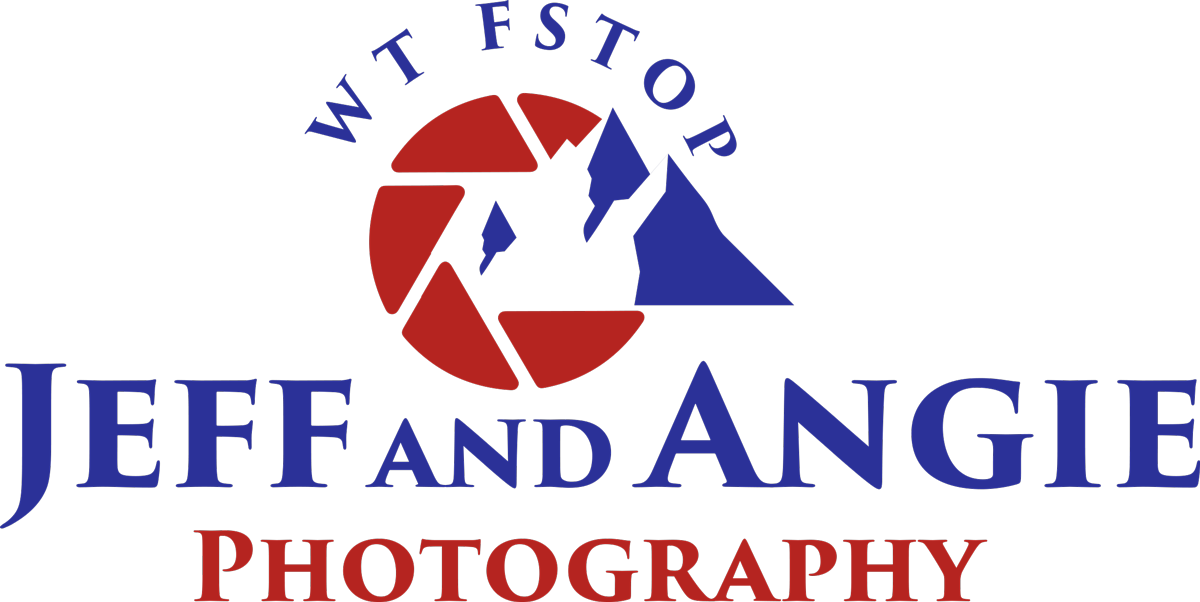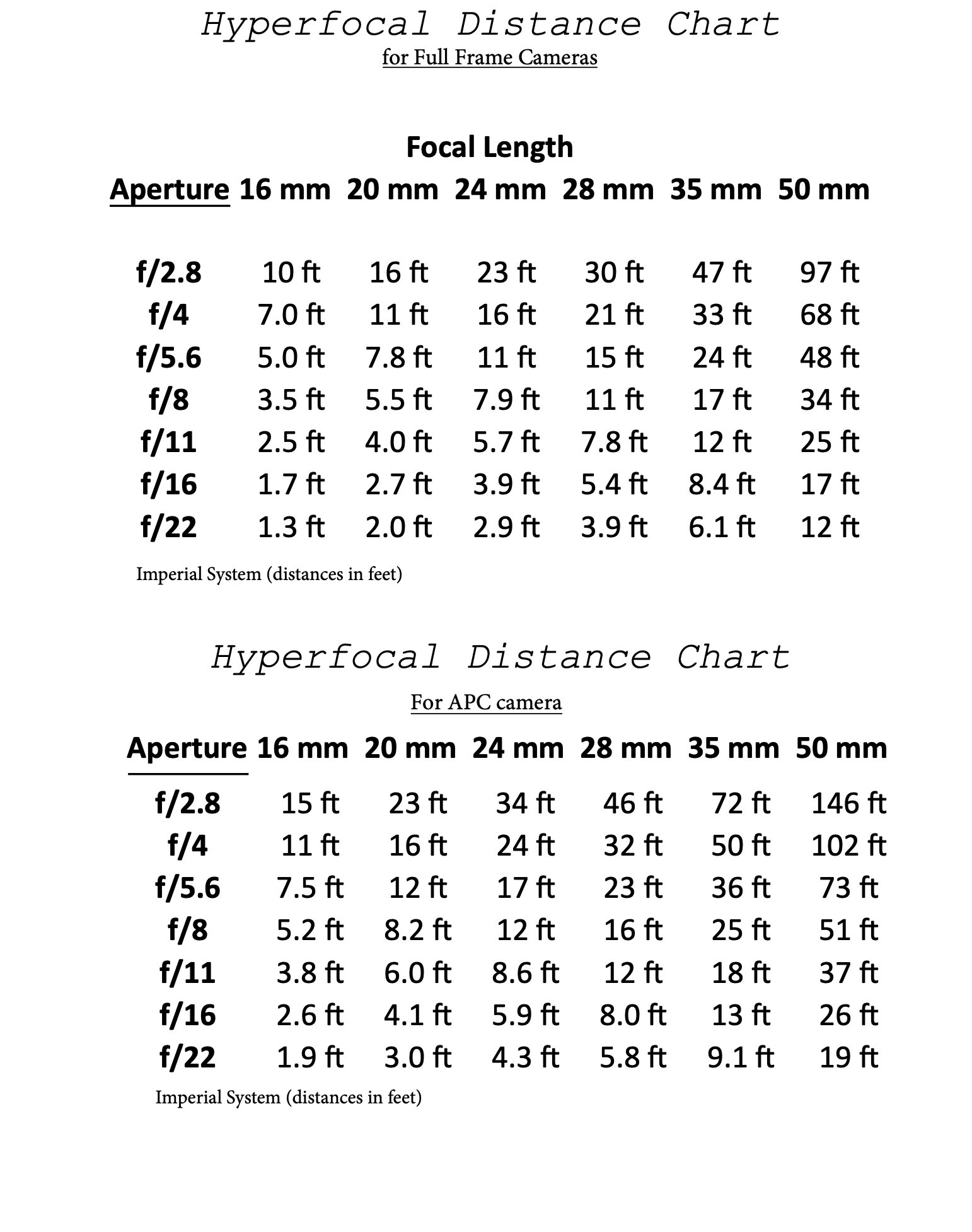What is Hyperfocal distance?
The technical definition of hyperfocal distance is quite simple: It’s the closest point to your camera that you can focus, while still ending up with an acceptably sharp region at infinity (i.e., your background in most photos). So lets dive in so you can get out there and start snapping some amazing landscapes.
If you are unsure of the three factors that determine depth of field and how to maximize the depth of field of an image, we can discuss the items or (Refer to the last page.)
The hyperfocal distance is the distance between the camera and a point in your scene at which everything from half the distance to that point and beyond to infinity will be acceptably sharp. This is your maximum depth of field (see Figure below). Snapping Sue hard at work
Three factors are needed to calculate the hyperfocal distance:
focal length of the lens
the aperture or f-stop
Hyperfocal Distance = Focal Length x Focal Length Aperture x “Circle of Confusion” What the heck is Circle of Confusion? you ask ( see definition at the end)
HOW DO YOU FIND THE HYPERFOCAL DISTANCE?
I know what you're thinking: I thought this was supposed to be easy, and now you're telling me I have to do calculations in the field? Yuck! No, thank you.
No worries. Math is not my forte either.
Thankfully there are tons of hyperfocal distance tables available online that you could print out and keep in your camera bag. The last page is your chart.
There are also photography apps that automatically calculate the hyperfocal distance for you. I use the PhotoPills app to do this. All you need to know is:
your camera body and the CoC parameter that you choose (PhotoPills defaults this for your camera body) the focal length of your lens
what aperture you plan to use
And when you plug those things in, the hyperfocal distance is automatically calculated.
By focusing at the hyperfocal distance, everything that is half that distance (from the hyperfocal distance point to your camera) and beyond to infinity will be acceptably sharp. See I told you that wasn't so bad, now was it?
As explained above, the hyperfocal distance is the distance between the camera and a point in your scene at which everything from half the distance to that point and beyond to infinity will be acceptably sharp.
Let's suppose Snapping Sue uses the PhotoPills app to plug in her focal length, aperture, and camera body. The app calculates the hyperfocal distance as 10 feet.
A hyperfocal distance of 10 feet indicates that if Snapping Sue focuses on something at 10 feet from the camera, then everything in the foreground from 5 feet out to infinity will be acceptably sharp (this is the maximum depth of field).
She should then position herself so that any interesting foreground elements are 5 or more feet away from her camera in order to capture the maximum depth of field.
Here are a few tips:
There are a few situations in landscape photography when you don't need to worry about the hyperfocal distance:
1. When all subjects in the scene are far away or effectively at infinity.
2. When there is a clear subject in mind like a flower or a wild animal, then just focus on that subject.
3. Double the distance, You simply focus at double the distance for every photo, and you’re set? For landscape photography, this method is a fantastic tool to have in your kit. I use this for every single landscape I encounter, given that I want the maximum possible depth of field. focus twice as far as your closest subject, and you’ll be set. So if the subject you want in focus is 2 feet away from the camera focus at 4 feet into the scene.
4. You can also focus about 1/3 of the way into a scene can work also.
Bottom line try different ways and make the decision on the big screen at home as to which one is the sharpest or your acceptably sharp image.
In case you want to know, here is the Definition of Circle of Confusion
So the definition may seem intimidating, but hang in there. You'll get it.
Well the circle of confusion (CoC) is a parameter that sounds more intimidating than it is. When you focus your lens on a point in a scene, the light converges at a focal point inside the lens at the focal plane. There is a little wiggle room before and after this focal plane where the light rays can converge and still produce an acceptably sharp image on the sensor. The CoC basically represents this wiggle room. Go beyond the CoC, and we might perceive the image as blurry. The CoC depends on the camera sensor size, the output print size, the viewing distance to the image, and the viewer's eyesight. As you can imagine, the CoC can be difficult to determine before you take the photo. This is why assumptions about print size, viewing distance, and visual acuity are commonly made, and standard CoC values (~0.02-0.03mm) are used to calculate the hyperfocal distance. Ok now that you think you are confused let me clear it up for you.
The Three items that determine your depth of field
Aperture. The aperture is the opening created by a set of overlapping metal blades, known as the diaphragm, inside a photographic lens. ...
Focal Length. The focal length of the lens determines the image magnification. ...
Distance to Subject.


